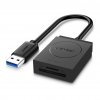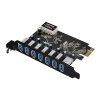I am starting to sound like a broken record around here haha - there must be 2 dozen other identical posts like the one I'm about to make:
I really think it's important to get in the habit of
not looking at the fancy names on memory cards. Not only do they mean absolutely nothing, but manufacturers mix and match names so you might buy one "extreme" card that works, and another "extreme" card that does not meet spec.
The *only* thing that matters for video is
minimum sustained write speed. This is *not* determined by any particular type of card brand or model, but the symbols that are on every card.
The Mavic Writes at 100Mbps which is 12.5MB/s. You need a card with a
minimum sustained write speed over 12.5MB/s, with some headroom. This is accomplished by buying a card with a "U3" and/or "V30" label on it, telling you that the
minimum sustained write speed is at least 30MB/s. There are no U2/V20 cards otherwise those would probably be fine too.
U1 / Class 10 cards are all too slow and you will drop frames - these are the cards often on sale for ridiculous prices which can be tempting, but do not give in.
So when someone tells you they use a "Samsung Evo" or a "Sandisk Extreme" and it works, that doesn't actually help you at all.
Every 15 minutes of shooting or roughly every battery is ~11.3 GB, so if you have the Fly More Combo you can run through all 3 batteries on a 64GB card. Personally I wouldn't put any more eggs in the basket than that in case of a failure, but obviously that is entirely up to you.
More detailed memory card info in my post here:
Tips for New Flyers














